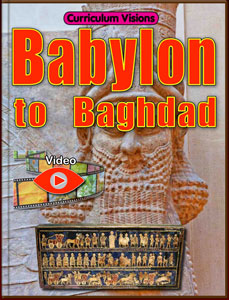Mesopotamia is the name used to describe the part of the Middle East that lies around the rivers Euphrates and Tigris. These rivers flow south to the Persian Gulf, and today they flow mainly through Iraq.
This is an area that has a long dry season, which is why people lived near to the rivers. But the headwaters of the rivers flow down from mountains, and in the foothills of the mountains, tall grasses grow. These grasses were collected and from them people learned how to cultivate cereal crops such as wheat.
Once they had grown wheat, people did not need to wander around hunting and gathering wild food. So they settled down and started the first civilisation. The people who did that were called the Sumerians, and their first city was called Ur.
Over the centuries, many cities were built, and many were destroyed by fighting. One city which has still survived is Baghdad, now in Iraq. Baghdad became a great centre of learning during Islamic times – about the same time as our Middle Ages.





